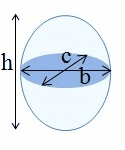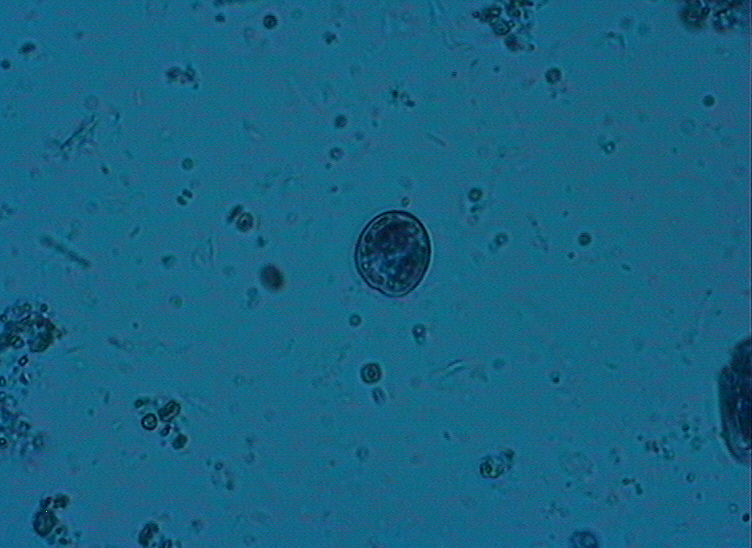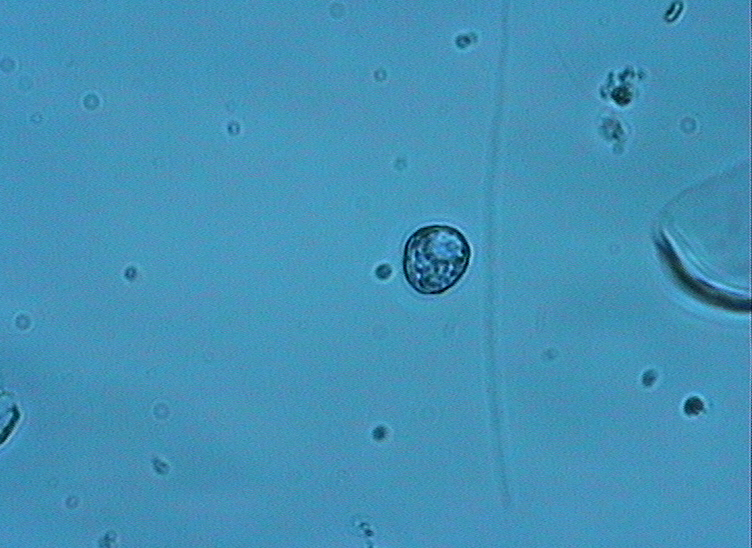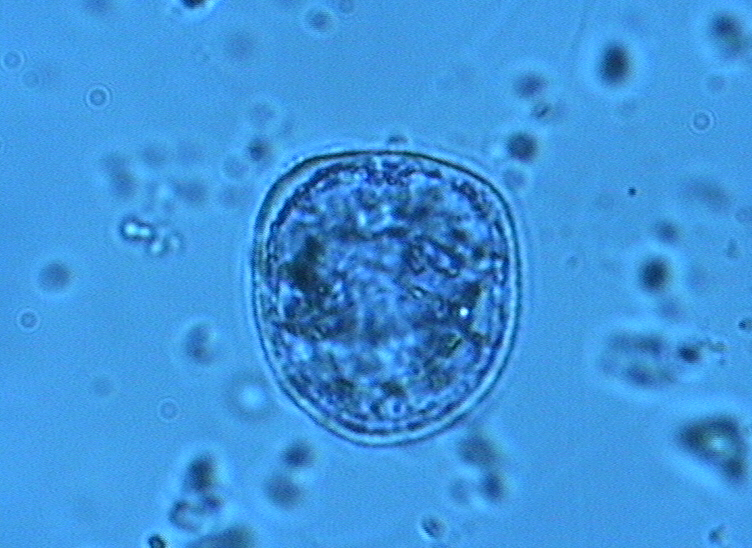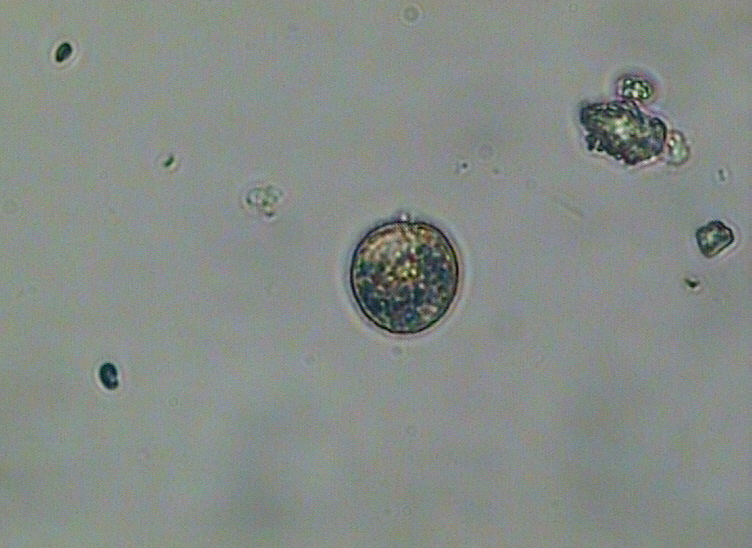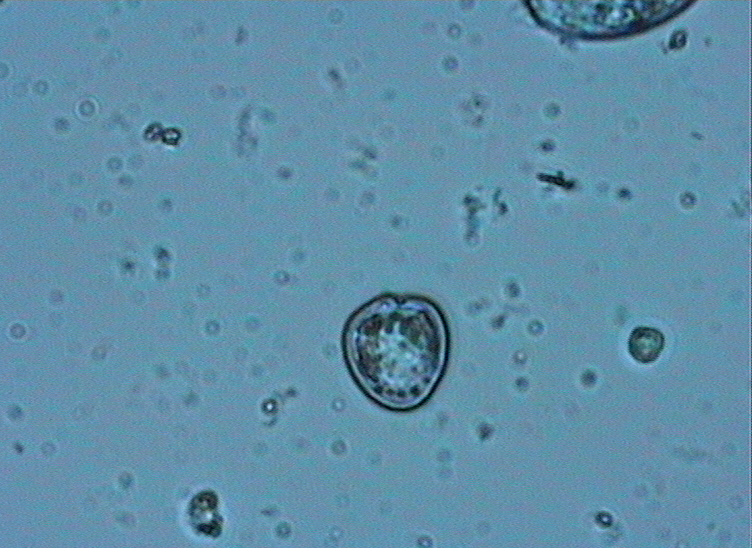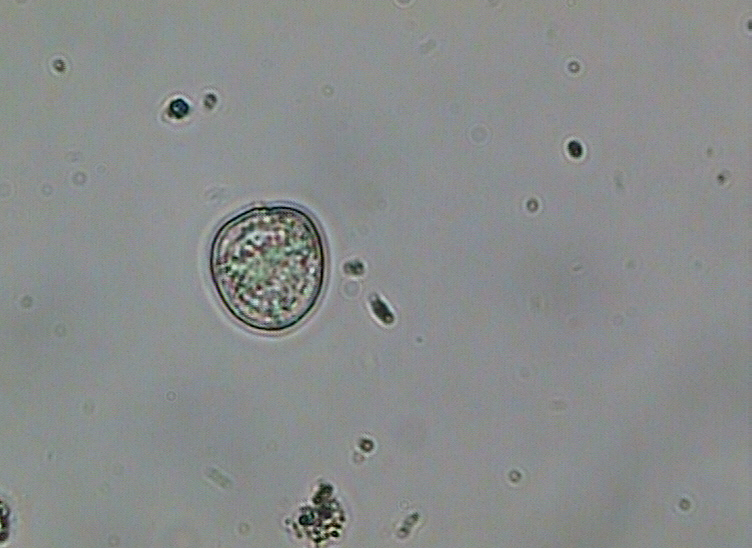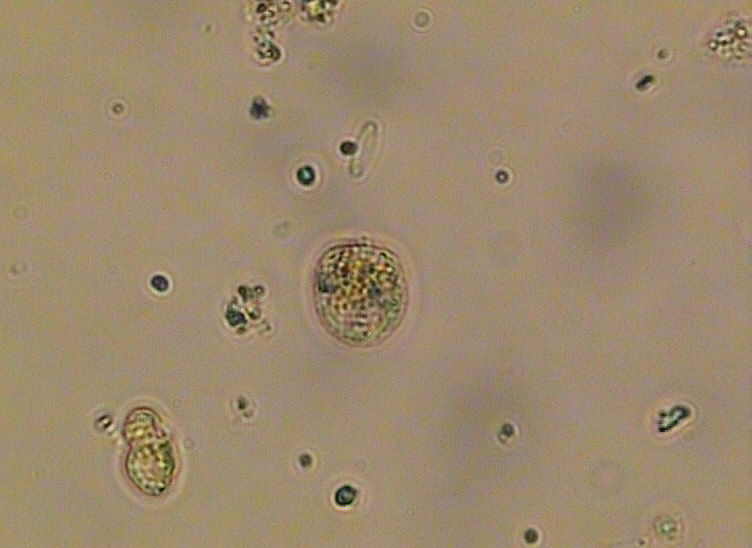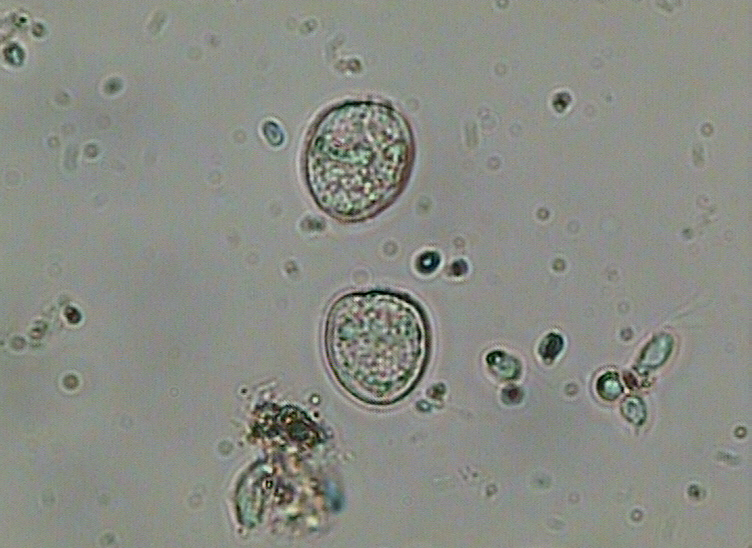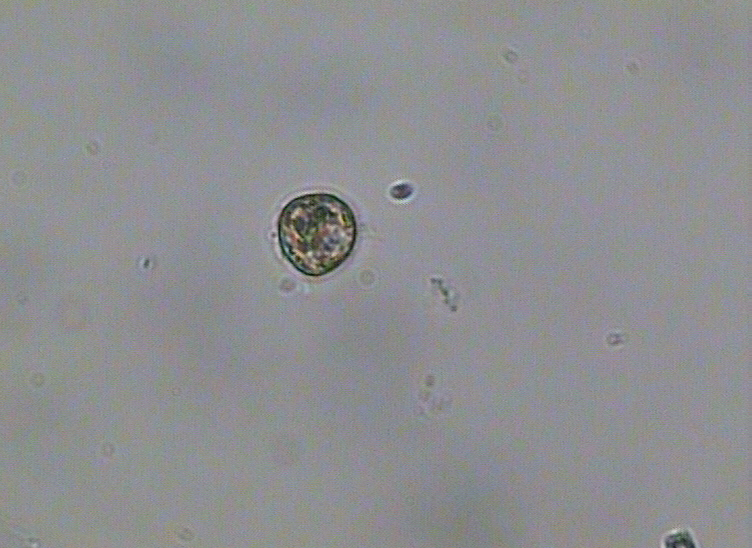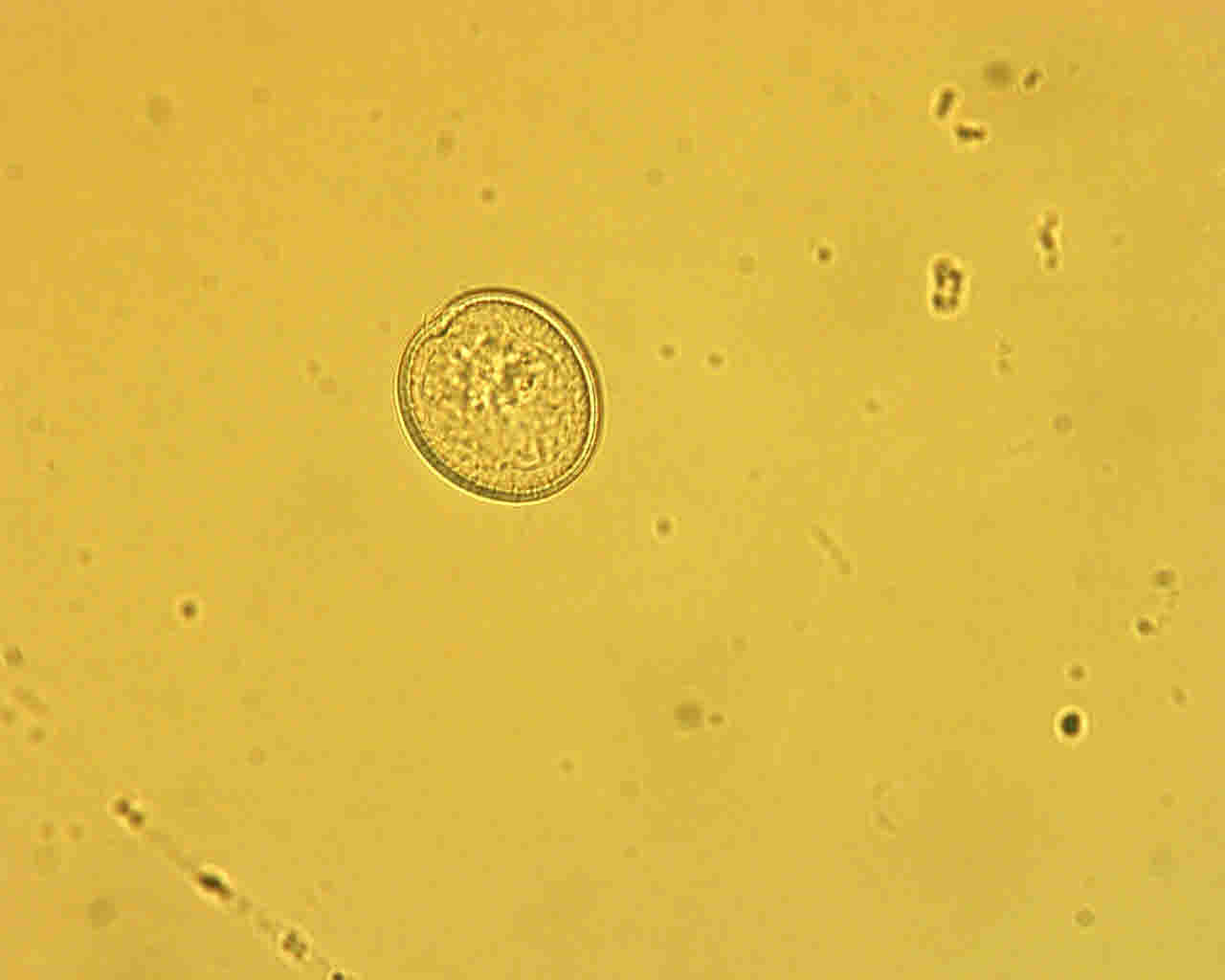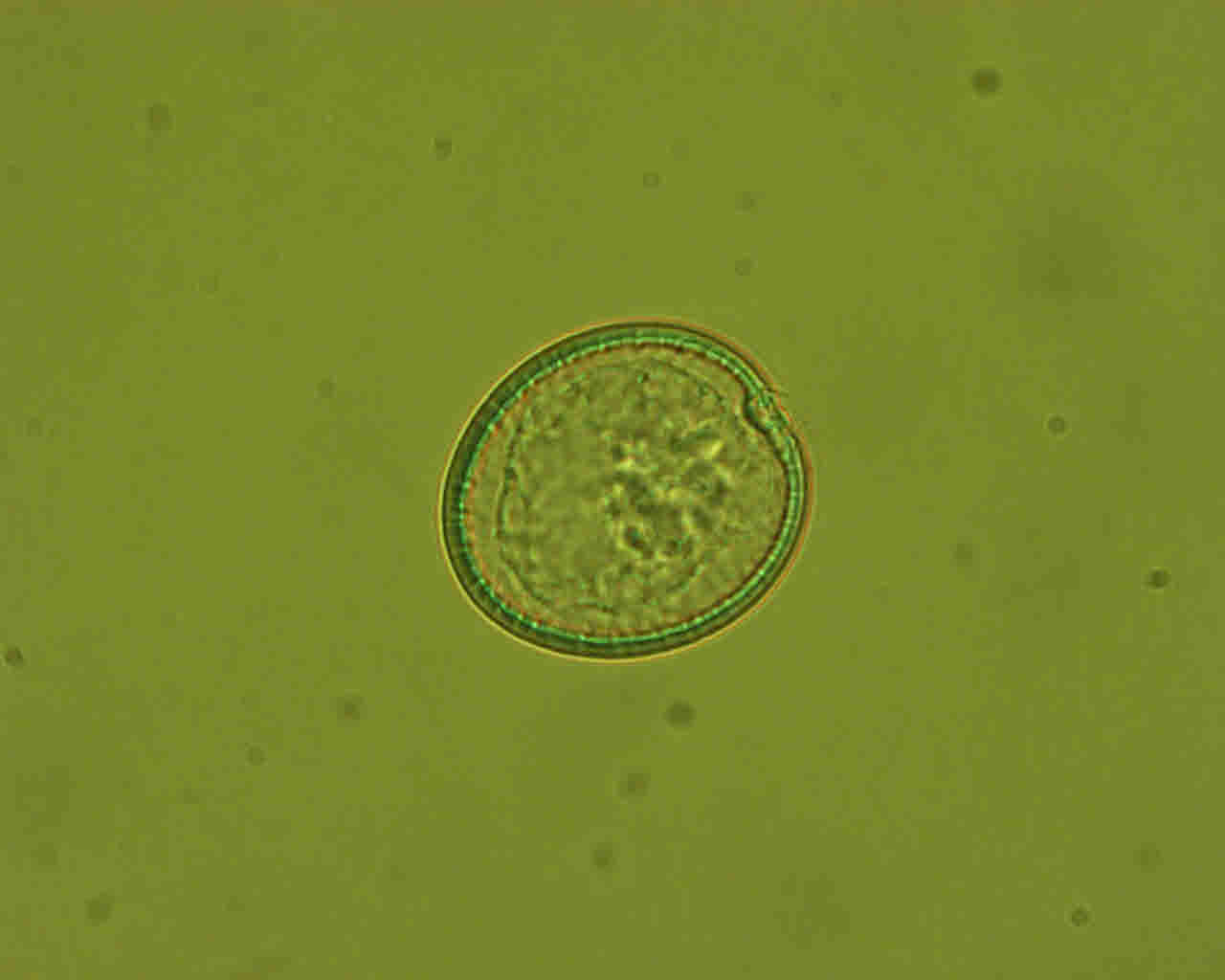
Species details
- Prorocentrum triangulatum : Martin (1929)
- Prorocentrum marie-lebouriae: (Parke, Ballantine) Loeblich III (1970)
- Prorocentrum cordiformis: Bursa (1959)
- Exuviaella minima: Pavillard (1916)
- Exuviaella marie-lebouriae : Parke, Ballantine (1957)
The cell is thecate, solitary cell of small dimensions. In valve view it appears oval to heart-shaped or even triangular, and laterally compressed. The cell surface is covered in numerous spines (about 600-700 per valve) with a wide base arranged in uniform pattern. In addition there are small pores distributed randomly, and larger pores at the base of some peripheral spines. In the periflagellar region there is a flagellar pore from which emerge 2 flagella and adjacent to which protrudes a small spine. Near the auxiliary pore there is a small periflagellar collar. The cell contains two golden-brown chloroplasts and in the posterior region there is an ellipsoid nucleus.
- Cell Length: from 14 to 22 µm
- Cell Width: from 10 to 15 µm
Cosmopolitan, planktonic, typical of marine and brackish environments.
Distribution: Prorocentrum minimum: Europe: Black Sea (Faust & Gulledge 2002), Great Britain (Parke & Dixon 1976), Croatia (Vilicic et al. 2009, Vilicic et al. 2009), Finland (Pertola, Faust, Kuosa & Hällfors 2003), Norway (Naustvoll 2001), Sweden (Pertola, Faust, Kuosa & Hällfors 2003); North America: Florida (Faust & Gulledge 2002), Maryland (Brook 1959, Eissler et al. 2009), Mexico; Caribbean Islands: Cuba (Moreira et al. 2009); Asia: China (Chomérat et al. 2011), Japan (Faust & Gulledge 2002), Korea (Chomér Sweden at et al. 2011).
Toxic species producing venerupin, a hepatoxin that causes death in molluscs and gastrointestinal diseases in human beings who eat contaminated shellfish.
Resistence Stages:Toxic species producing venerupin, a hepatoxin that causes death in molluscs and gastrointestinal diseases in human beings who eat contaminated shellfish.
Check-list of British marine algae - third revision., Journal of the Marine Biological Association of the United Kingdom 56, Parke M., Dixon P.S., 1976, 527-594.
Ultrastructural characterization of the lytic cycle of an intranuclear virus infecting the diatom Chaetoceros cf. wighamii (Bacillariophyceae) from Chesapeake Bay, USA, Journal of Phycology 45(4), Eissler Y., Wang K., Chen F., Wommack K.E., Coats D.W., 2009, 787-797
Microalgas formadoras de mareas rojas en la bahía de Cienfuegos, Cuba., Algas 41, Moreira A., Fernández R., Comas A., Alonso C., Abbate M., 2009, 4-6.
Dinoflagellatae (Peridineae). In: Kryptogamen-Flora 2. Aufl. X. Band, 3. Abt. 1 Teil., (Rabenhorst, L. Eds),, Schiller J., 1933, 433-617
Prorocentrum glenanicum sp. nov. and Prorocentrum pseudopanamense sp. nov. (Prorocentrales, Diniphyceae), two new benthic dinoflagellate species from South Brittany (northwestern France)., Phycologia 50(2):, Chomérat N., Zentz F., Boulben S, Bilien G., van Wormhoudt A., Nézan E., 2011, 202-214
Notes on the desmids of the genus Staurastrum. III. Staurastrum paradoxum in the Jenner Herbarium of the British Museum., Naturalist Hull 1959:, Brook A.J., 1959, 81-83
Morphology of Prorocentrum minimum (Dinophyceae) in the Baltic Sea and in Chesapeake Bay: comparison of cell shapes and thecal ornamentation., Botanica Marina 46:, Pertola S., Faust M.A., Kuosa H., Hällfors G., 2003, 477-486
Prey size spectra in naked heterotrophic dinoflagellates., Phycologia 39:, Naustvoll L.-J., 2001, 448-455
Identifying Harmful Marine Dinoflagellates, Smithsonian Institution Contributions from the United States National Herbarium, Volume: 42, Faust M.A., Gulledge R.A., 2002, 1-144
Composition and annual cycle of phytoplankton assemblages in the northeastern Adriatic Sea., Botanica Marina 52(4), Vilicic, Djakovac, Buric, Z. & Bosak, 2009, 291-305.
_635349823076685188.jpg)
_635349823148775188.jpg)
